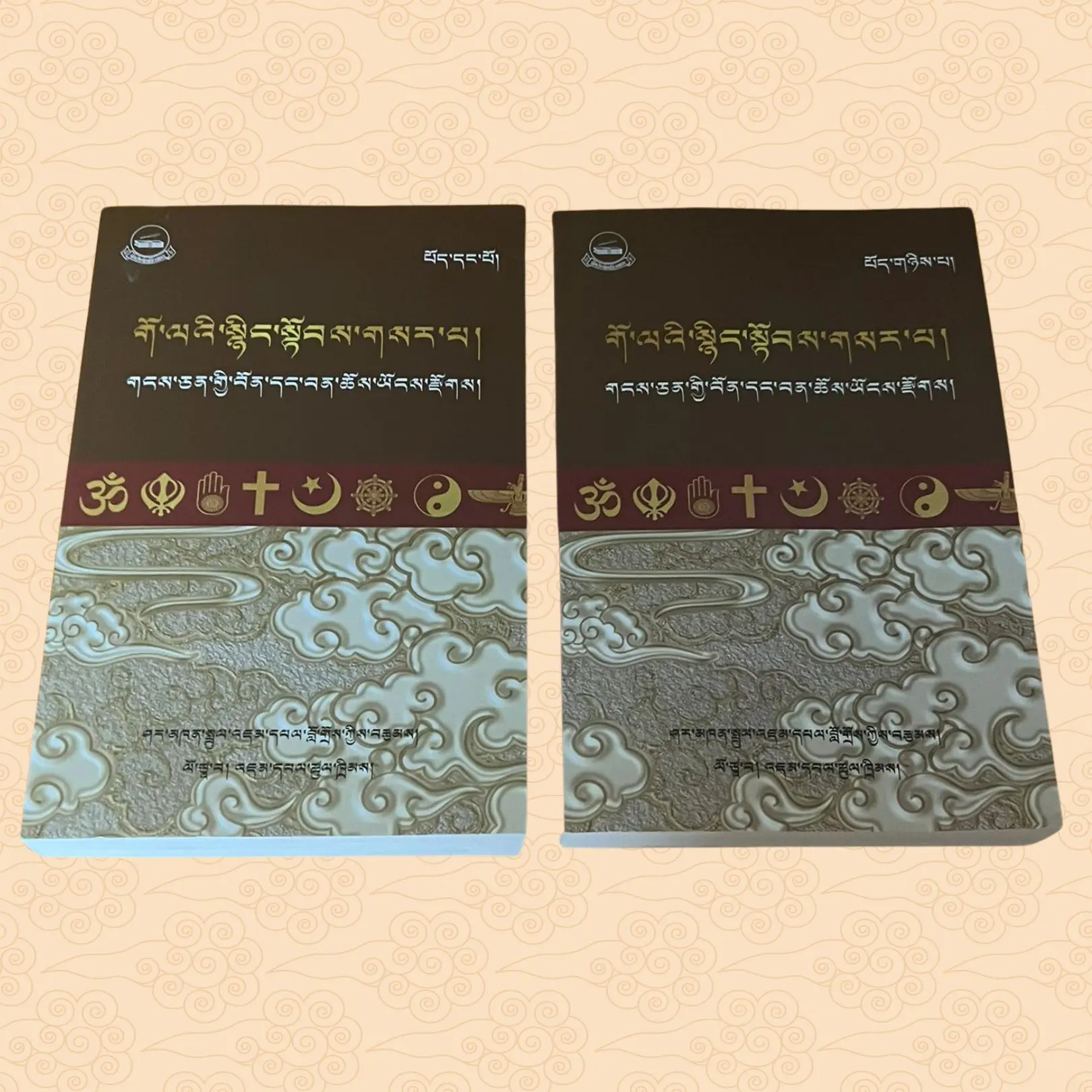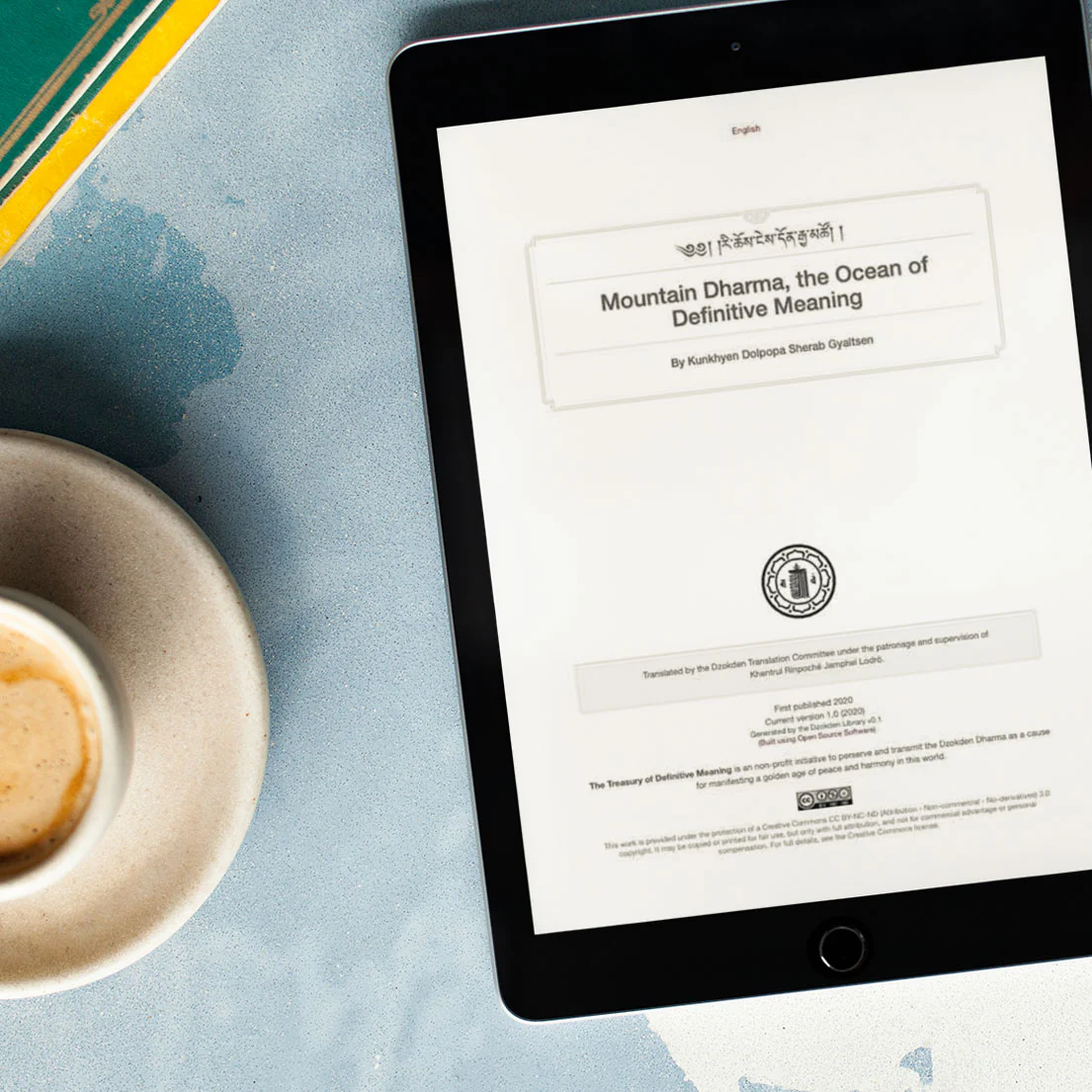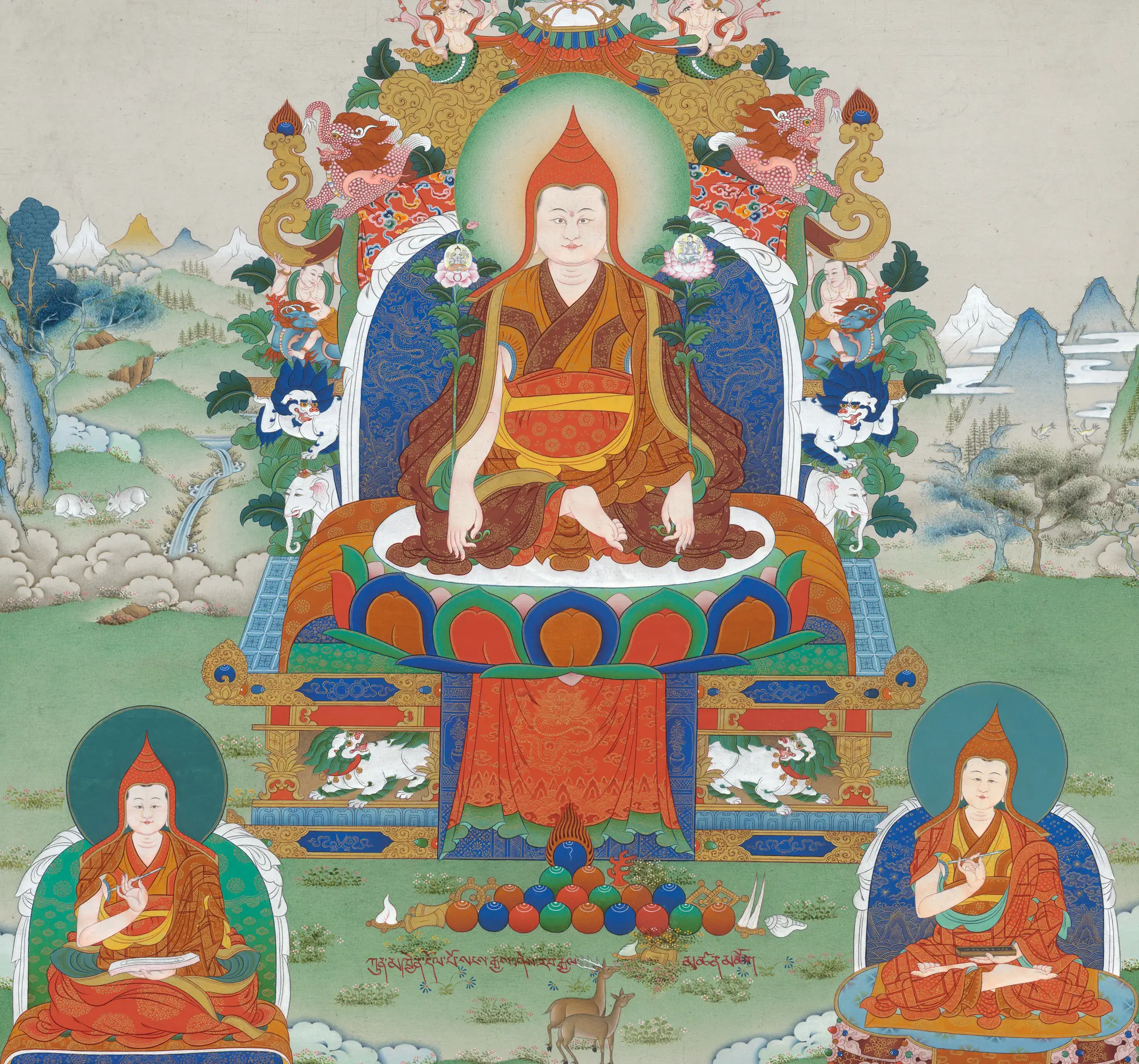གོ་ལའི་སྙིང་སྟོབས་གསར་བ།

དེབ་འདིའི་ནང་དུ་འཛམ་གླིང་གོ་ལ་ཡོངས་ཀྱི་དམ་ཆོས་དང་ཚན་གསར་གྱི་ཉིང་ཁུ་བཅས། སྐད་རིགས་གཞན་ཤེས་བྱ་རྣམས་ལ་བོད་ཡིག་གིས་འབྲེལ་བཤད་ཁ་གསལ་བཅས། བོད་ཀྱི་ལོ་རྒྱུས་ཐོག་ཏུ་བྱུང་མ་མྱོང་བཔའི་༧གོང་ས་སྐྱབས་མགོན་ཆེན་པོའི་ཐུགས་བཞེད་དམ་བཅའ་གཉིས་པ་དང་མཐུན་པའི་རྨད་བྱུང་ལེགས་བཤད་ཀྱི་སྐྱེས་ཆེན་པོ་ཞིག་ཡིན་པར་ན་ག་སངས་རྒྱས་བསྟན་དར་གྱིས་བསྔགས་བརྗོད་གནང་། དེབ་འདི་འདྲ་ཞིག་མེད་ན། བརྗོད་བྱ་འདི་འདྲའི་རྒྱ་ཆེན་པོ་ཞིག་མི་ཚེ་ཧྲིལ་བོར་སྦྱངས་ན་ཡང་ཤེས་དཀའ་རུང་། དེབ་འདི་ལ་བརྟེན་ན་ཐམས་ཅད་པོ་ཉིན་ཁ་ཤས་ཀྱི་ནང་དུ་འཛམ་གླིང་ཧྲིལ་བོའི་དམ་ཆོས་ལོ་རྒྱུས་ཚན་གསར་དང་བཅས་པ་ཡོངས་རྫོགས་རག་རིམ་ཤེས་ཐུབ་པ་ཞིག་པ་ཞིག་ཡིན་པས། འདི་ནི་རྩོམ་པོ་དང་བསྒྱུར་པ་པོའི་ལྷག་བསམ་དང་སྙིང་སྟོབས་བརྩོན་འགྲུས་ཆེན་པོ་ལས་བྱུང་བས། བཀྲ་ཤིས་ཤིང་ངོ་མཚར་རྨད་དུ་བྱུང་བའི་ལེགས་བཤད་ཞིག་རིན་མེད་ཀྱིས་གནང་སྦྱིན་ཡིན་པས་གོ་སྐབས་མ་ཤོར་རོགས་ཞུ་ཞུ།
དཔར་སྐྲུན་གསལ་བཤད།
༄༅། །གོ་ལ་གསར་པའི་སྙིང་སྟོབས་ཞེས་པ་འདི་ནི་ཤར་མཁན་སྤྲུལ་འཇམ་དཔལ་བློ་ གྲོས་མཆོག་གིས་ལེགས་པར་རྩོམ་སྒྲིག་གནང་ཞིང་། བོད་དགེ་འཇམ་དཔལ་ཚུལ་ཁྲིམས་ ལགས་ཀྱིས་བོད་འགྱུར་དང་རྩོམ་སྒྲིག་གནང་བ་ཞིག་ཡིན། དེབ་འདི་ནི་༸རྒྱལ་བ་ཡིད་ བཞིན་ནོར་བུའི་ཐུགས་བསྐྱེད་དམ་བཅའ་བཞི་ལས་གཉིས་པ་ཆོས་ལུགས་འཆམ་མཐུན་དང་འབྲེལ་བའི་ལེགས་བཤད་རྨད་བྱུང་འཛམ་གླིང་ཆོས་ལུགས་ཕལ་ཆེ་བའི་ངོ་སྤྲོད་རྣམ་ གཞག་གསལ་བར་འཁོད་པའི་དེབ་ཅིག་ཏུ་མཇལ། དེབ་གཉིས་པ་སྟེ་སྨད་ཆར་བོད་དུ་ བྱུང་བའི་བན་བོད་ཀྱི་བྱུང་བ་དང་ལྟ་གྲུབ་དགོན་ཁག་དང་བཅས་པའི་ངོ་སྤྲོད་གསལ་བར་ འཁོད། སྒྱུར་བ་པོས་བོད་ཀྱི་དཔེ་མཛོད་ཁང་གི་འགན་འཛིན་དགེ་བཤེས་ལྷག་རྡོར་མཆོག་ ལ་དཔར་སྐྲུན་ཆེད་འབྲེལ་བ་ཞུས་པ་བཞིན་འདི་ག་དཔར་སྐྲུན་ཚན་པར་ལན་གཅིག་ཀློག་ དགོས་པའི་ལམ་སྟོན་ཕེབས་པ་བཞིན་དེ་རྗེས་དཔར་སྐྲུན་བཀའ་འཁྲོལ་ཐོབ་སྟེ་དེབ་སྟོད་ སྨད་གཉིས་སུ་དཔར་སྐྲུན་ཞུ་གི་ཡོད་པས་འདི་ནི་སྟོད་ཆ་དེའོ།།
རྨད་བྱུང་ལེགས་བཤད་ཀྱི་སྐྱེས་ཆེན་པོ་འདི་ལྟ་བུ་ཞིག་བོད་ཡིག་ཀློག་པ་པོ་རྣམས་ལ་ མཁོ་འདོན་གནང་བ་ནི་དོན་དམ་དུ་ཐུགས་རྗེ་ཆེ་ཞུ་དགོས་པ་ལོས་ཡིན། དེབ་འདི་ཀློག་ པའི་རྗེས་སུ་ཀློག་པ་པོ་རྣམས་ནས་ཐམས་ཅད་མཁྱེན་པའི་ཐུགས་བསྐྱེད་དམ་བཅའ་གཉིས་ པ་དེར་ངེས་ཤེས་འདྲོངས་པའི་རེ་བ་དང་བཅས་བོད་ཀྱི་དཔེ་མཛོད་ཁང་གི་བོད་ཀྱི་རིག་ གཞུང་ཉམས་ཞིབ་དང་དཔར་སྐྲུན་སྡེ་ཚན་གྱི་འགན་འཛིན་གུས་ན་ག་སངས་རྒྱས་བསྟན་ དར་གྱིས་རབ་གནས་ཆུ་ཡོས་ཏེ་ཕྱི་ལོ་ ༢༠༢༣ ཟླ་ ༡༢ ཚེས་ ༡༥ ཉིན་བྲིས་པ་དགེའོ།།
Founder of the Zhentong Middle Way Philosophy
The Fourth Council
བཀའ་བསྡུ་བཞི་པའི་དོན་བསྟན་རྩིས་ཆེན་པོ།
The Great Calculation of the Doctrine Which Has the Significance of a Fourth Council
But in Tibet, Buddhism was not lost. Before Dolpopa became a Jonangpa, he went everywhere to debate and everybody agreed he was fully omniscient. So everybody called him omniscient. His party did not name him, nor did the followers who venerated him. Everybody called him this. This was also very unusual. There’s nobody in Tibet like this. And then finally, he convened a meeting where all the scholars came together. And then he told everybody his understanding of the Completion Golden Dharma. This meant that everybody had a chance to debate if they did not agree.
But everybody agreed. Nobody was able to debate with him. So that’s how the texts for the Fourth Council were made. It was in this text that great details of the complete golden Dharma (Dzokden Dharma) were written. This text would take several months full time to read and understand. So if you want to know the essence of the complete golden Dharma, the Dzokden Dharma, this view is called Zhengong Madhyamaka.
Khentrul Rinpoche says everyone should read this book at least once in their lifetime.
An Authentic Zhentong Translation
The book is available as a free PDF download on our store website TantricTreasures.com
Rime Lodrö (Ives Waldo) translated the book from Tibetan to English to ensure that the Zhentong view is properly translated. If you would like to support Dzokden’s effort to translate the Dharma, you can support our translation team’s effort here.

Mountain Dharma: The Ocean of Definitive Meaning
By Dolpopa Sherab Gyaltsen
Translated By Rimé Lodrö (Ives Waldo)
This key text is an import work on the Zhentong View. Reading it even once will bring many blessings to you and help you understand this view.
ABOUT THE AUTHOR
Dolpopa Sherab Gyaltsen
Dolpopa Sherab Gyaltsen is the expounder of the dzokden Dharma, the completion of golden dharma. He perfectly explained the definitive meaning, the ultimate truth of the Dharma, the pinnacle of Shakyamuni’s teachings. As a lineage Lama in the Jonang tradition, he was known as omniscient because he was undefeatable in debate. His established the unified system of Jonang practice that brought together the sutra lineage of Zhentong Madhyamaka with the tantric lineage of the Kalachakra Tantra. Born in 1292, in a remote region of western Tibet, Dolpopa’s birth had been prophesied by many sutras and tantras such as the Great Drum Sutra. He is commonly believed to have been an emanation of the Bodhisattva Avalokiteshvara as well as the Shambhala King Pundarika.
